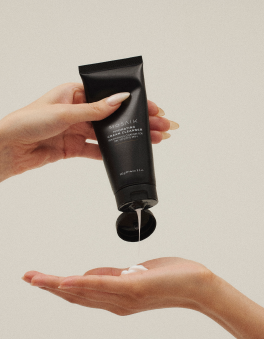While most of us in this age group will generally have youthful-looking skin, it is also the time when our skin begins to change - whether from hormonal changes, increased susceptibility to intrinsic and extrinsic influences, or general ‘wear and tear’. Once we enter our 30s, there’s no denying that we may slowly start to notice the effects of ageing on our skin and skin health. Here are some tips on what you need to do to boost your skin's health and resilience.
The how-tos of skincare are splashed just about everywhere, and so by the time we are into our 20s, many of us have already established some form of skincare regimen that suits our skin. At the same time, we may have learned to identify skincare products or ingredients that work better than others. On the downside, it is a time when we also notice a slight loss in both the firmness and plumpness of the skin, the emergence of the very first pigmentation spots or wrinkles (especially around the eyes), or even stress triggers that may cause adult acne or breakouts from time to time. Yikes!
Since the skin’s cell turnover no longer occurs as efficiently and speedily as it did during our early 20s, it can begin to look dull, feel drier than it used to, and annoying scars or marks left behind by blemishes may also take longer to heal than before.. To face these challenges it is important to create the time and put effort into an effective skin regime suitable to not only your skin’s needs, but also your lifestyle choices. This regime will help you prepare your skin in the best way possible, to adapt in response to intrinsic and extrinsic factors now, and in the years to come.
The Importance of a Good Cleansing Routine
We all know that proper cleansing and moisturising are fundamental skincare regime steps that you should be practising. These essential steps in a regime help to keep the skin clean and healthy - removing any built-up debris, bacteria and oiliness from the day. As we age, however, you may discover that change is needed. The products that you’ve been using for these particular steps may no longer work in accordance with the current requirements of your skin. This is totally normal! You may discover that your trusted moisturiser no longer adequately works; no longer hydrates your skin like it used to. This is an indication that it’s time to switch to a different product; something that is more emollient, or full of ingredients that nourish and activate the protective barrier of the skin. You may also want to start using a night or spot-treatment cream. Using an extra night treatment may help to give your skin some extra love and care, particularly in key areas such as around the eyes, forehead, nasal folds etc..
Start Exfoliating!
Another important step to incorporate into your skin program is regular exfoliation. Exfoliation can be done physically – which means with a gentle topical scrub that contains granules that mechanically slough away dead skin cells; or chemically, which is achieved using exfoliants that contain low concentrations of acids and/or enzymes. Individuals with oily skin types can use an exfoliant 2-3 times a week, but those with sensitive or dry skin should exfoliate once every week or two weeks in order to avoid the risk of skin irritation. Chemical peels or exfoliation treatments should be done by the care and supervision of a highly knowledgeable and qualified skin specialist or Dermatologist. Remember, if you are on medication, pregnant or breastfeeding, chemical peels are not advised.
It’s All In The Neck.
Don’t forget to pay attention to your neck! Thankfully, recently, the neck area is gaining more attention when it comes to facial care and preventative treatments. Like the area around your eyes, the skin on your throat and particularly, on your decolletage is thinner, containing less oil glands and fewer hair follicles. It is also often exposed to (unprotected) UV’s and other environmental factors and therefore, ages much faster than your face, with more volume loss and increased inflammation. This is why it is important to pay attention now and consider some preventative care steps! By giving this area some love ahead of time it can truly pay off in a few years… Remember, not to forget your daily sunscreen, since this area is constantly exposed to UV rays, just like your face. A light and non-greasy formula is preferable, naturally, so that you’ll feel comfortable wearing it.
Pamper Yourself With A Mask.
Face masks or sheets are a great way to give yourself a little break to relax, put on some nice music and just take some time for yourself (and your skin), those 15 minutes can really do wonders! Sheet masks and wash-off masks are both effective extra treatments you can do in the comfort of your home - preferably in the evening, and some may even be suitable to do more frequently than just once every week. From hydration, vitamin boosting, brightening, and even firming, there are a variety of masks on the market that target just about any skin condition and need! Just keep in mind to not go overboard with masks containing exfoliating ingredients such as salicylic acid, glycolic acid, or active ingredients that can potentially cause skin irritation when used too often.
Taking care of your skin is a life-long commitment and process. But this doesn't mean that it has to be complicated or take loads of your time. With a few simple steps and products that are suitable for your skin type and as well your skin condition, caring for your skin can be made easy and result in long-term benefits.













